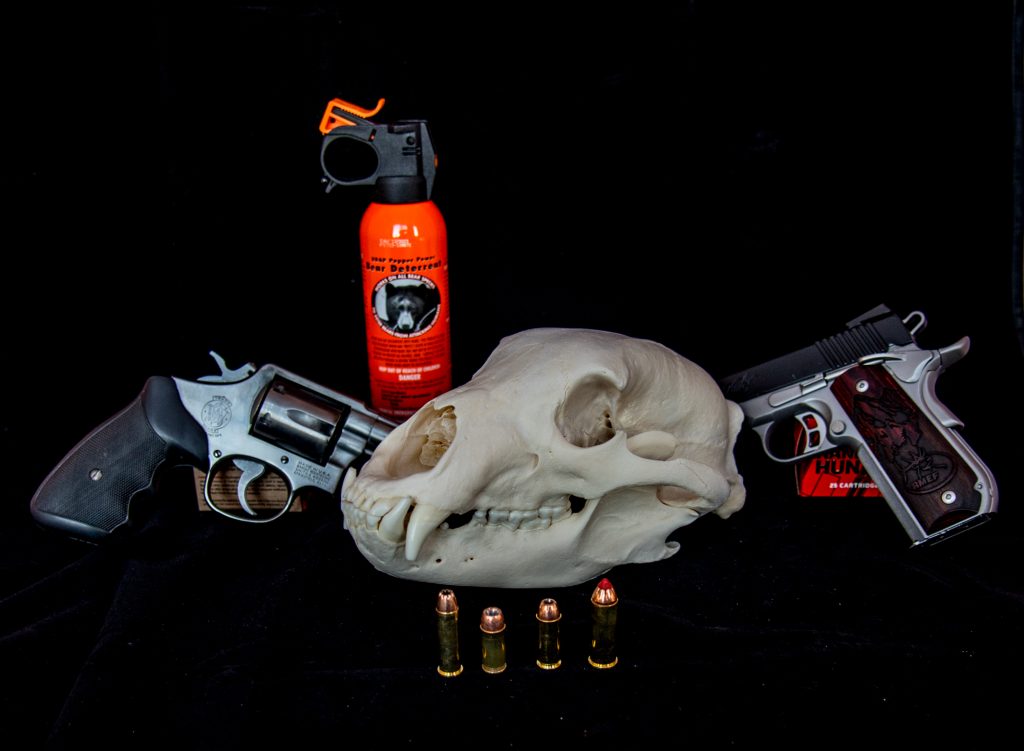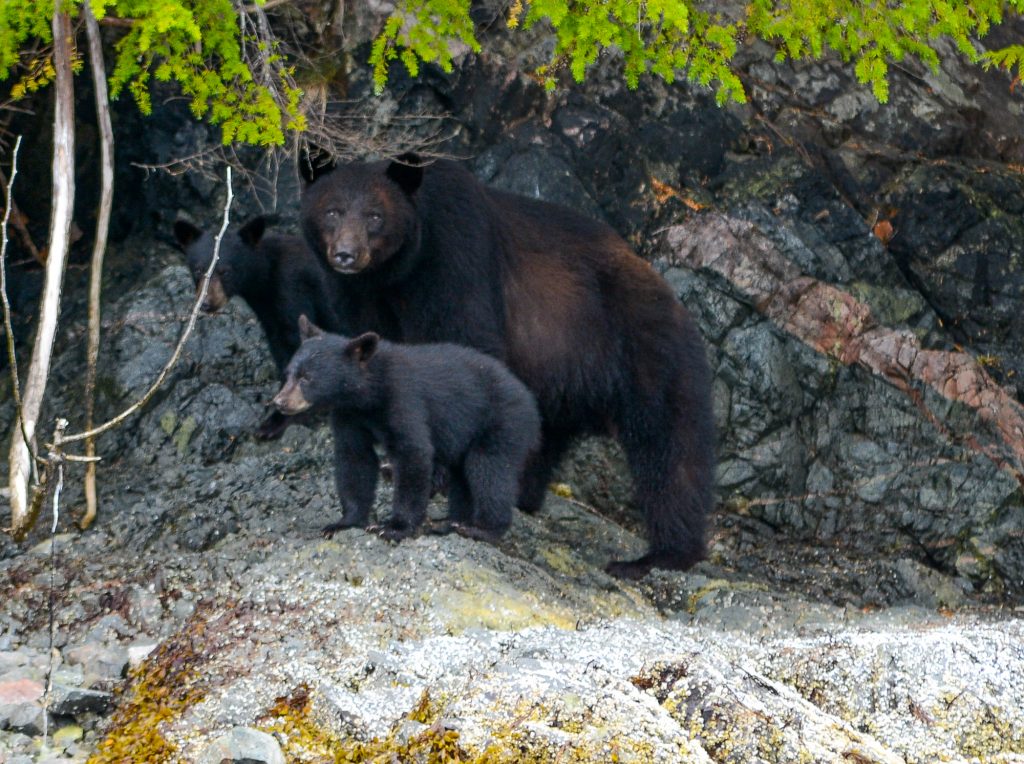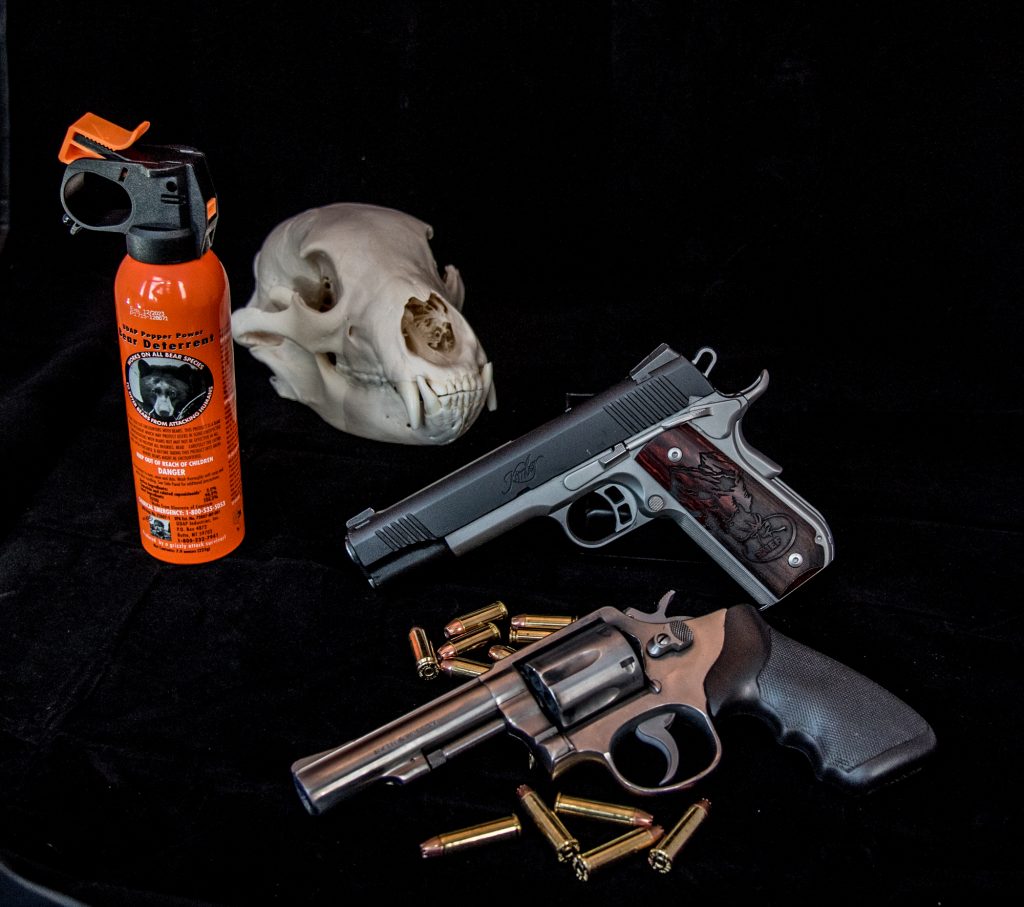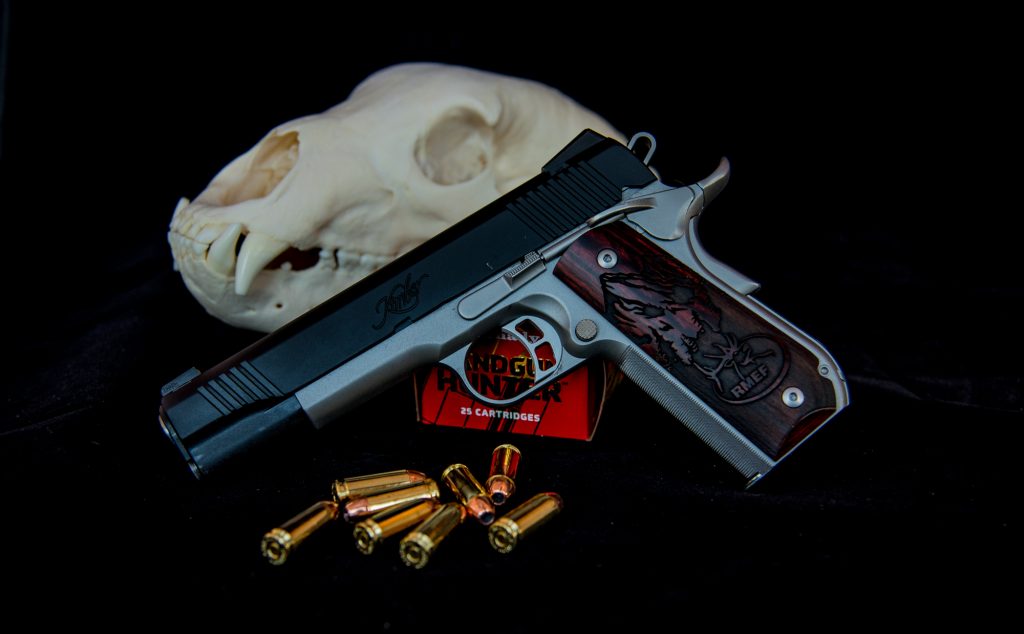Best Bear Defense Leave a reply

Best Bear Defense
By Jason Brooks
As spring starts to thaw the frozen ground and bears begin to wake up it is a good reminder that they will be hungry and sows will have cubs. Though most bear encounters are non-confrontational there are attacks each year and you need to be ready to defend yourself. In September of 2018 an archery elk hunter and his guide were mauled in Wyoming by a Grizzly. The guide died at the scene from the bear attack and the client suffered injuries but lived.
Grizzlies are known for attacking for various reasons that include defending already dead food, protecting offspring and being a top predator, killing to eat. Black bears are less likely to attack but according to a 2020 article on Wide Open Spaces there have been twenty-five fatal black bear attacks in the last twenty years. Non-fatal attacks are more likely to occur but anyone who has ever been face to face with bears know the deadliest are a sow with offspring. Here are some things to think about when it comes to the best bear defense and how to protect yourself in the backcountry.

Bear Spray vs. Firearms.
The great debate of bear defense is between bear spray or using a firearm. Bear spray is very effective and easy to use. Plus, cans are often lighter and even smaller than some firearms. But they are not foolproof and have some downfalls. The first being environmental, as they can be affected by extreme cold temperatures as well as wind will affect accuracy. They are also a very short range defense with most only propelling the extremely hot pepper oils about 15 yards. The hot pepper oils also affect everything, including you if it blows into your face or gets on your hands and you rub your eyes. Once the oils get on gear it stays there until a long washing in hot and soapy water. This means if you are in the backcountry and deploy bear spray you get to “enjoy” it until you get home to clean up. Some bear spray and pepper spray companies also sell a “trainer” can that is denatured alcohol or water and allow you to practice deploying the spray without the mess.
Guns are often the “old school” thought when it comes to bear defense. Yes, it is very hard to hit a moving target that is trying to kill or injure you but you don’t always need to kill the bear to stop them. The loud noise of the firearm being discharged often thwarts the attack and the goal is to stop the attack, not necessarily kill the bear. If you wound it and it runs off, count it as mission accomplished and get out of there safely. Guns also deter criminals back at the trailhead. Plus, they can be used to hunt other game. A shotgun can be loaded with slugs and buckshot if you encounter a bear but have a few shells of bird shot in your pocket so if a grouse comes along you can use the opportunity to add it to the dinner plate.

If You Choose Firearms Then Be Sure To Carry The Right Gun.
Back to the elk hunters in Wyoming. One had a handgun but it was tucked away in a backpack and by the time the hunter was able to get the firearm it was too late, plus the hunter couldn’t operate the gun properly so it was no use. If you choose to carry a handgun then make sure you keep it handy and know how to use it.

Handguns: Revolver or Semi-Auto.
When it comes to handguns there are two factors to think of. The first is the type of handgun you carry. Revolvers are reliable. They fire in adverse weather including extreme cold, are likely to cycle even when dirty, and can be chambered in large calibers such as .41 and .44 Magnum. But revolvers are often limited in capacity to five or six rounds and when it comes to defending yourself the more times you can shoot the better. Semi-auto handguns, such as the Kimber Camp Guard in 10mm are easy to shoot with single action triggers, less recoil with the gas operations and recoil springs, and hold more ammo. All are a bonus when it comes to needing to shoot quickly and accurately.

The second factor is the ability to shoot accurately. Be sure to practice a lot and to do so under stress. Timed drills, reloading drills, and accuracy drills all need to be practiced and proficient. Carry the firearm in a way you can get to it quickly. This means a holster or sling. Practice drawing the handgun with either hand as you might have to pull it when injured. Years ago my father was charged by a sow black bear after he hiked down a trail and realized he stepped right between her and her twin cubs. She began charging him and he climbed a nearby tree, using both hands to hang on, which means the handgun in his backpack was of no use as he couldn’t get to it. She started to climb the tree up at him but a few swift kicks to her nose and she retreated and took her cubs with her. It ended well but he learned that carrying a handgun inside a backpack is of little use when you need it to defend yourself.
Shotguns & Rifles:
Long guns are your best defense when it comes to using a firearm as they are more powerful. Guides in Alaska often use a “guide gun” chambered in such hard hitting calibers as the .45-70 or 35 Remington. The lever action is popular as you can cycle the rifle quickly and acquire the open sights rapidly. But it is the shotgun that is more dependable and likely to save your life when a bear charges. This is because you can point and hit the target. Shotguns allow you to vary and stack the rounds, with the first being buckshot to deter the bear, then a few slugs to stop the threat dead in its tracks. The drawback to rifles and shotguns are they are bulky and heavy.
Regardless if you choose bear spray or a firearm you must carry it. The best bear defense is the one you use and have with you. Be sure to know the state laws when it comes to purchasing and carrying either a gun or pepper spray, including home storage and how to transport them in your vehicle to and from the trailhead. There are some places that don’t allow firearms, such as firearm restriction zones, and National Parks. Be sure to know all of the rules and regulations and most important practice with what you carry.
Jason Brooks
The Outdoor Line-Field Editor

